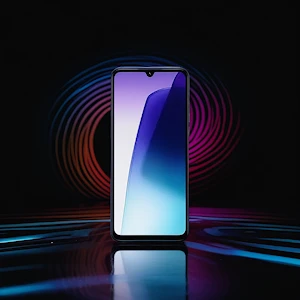The Xiaomi Redmi 14C 5G: A Big Screen on a Budget, But What’s the Catch?
Let’s get one thing straight: this phone isn’t here to blow your mind. It’s here to get the job done for under $200 (estimated), and it makes some interesting tradeoffs to hit that price. Think of it like a reliable hatchback with a surprisingly roomy trunk – it’ll get you where you need to go, but don’t expect heated seats.
The Screen: Bigger Isn’t Always Sharper
That 6.88-inch display is massive – almost comically so. Watching Netflix on this feels like holding a mini-TV, and the 21:9 aspect ratio gives you those cinematic black bars without cropping. But here’s the rub: 720p resolution stretched across nearly 7 inches means you will see pixels if you look closely. Text isn’t razor-sharp, and Instagram photos lose some pop. The 120Hz refresh rate helps scrolling feel smoother than expected, but the LCD panel’s colors look a bit washed compared to AMOLED rivals.
Real-world take: Great for binge-watching if you’re not picky about resolution. Frustrating if you edit documents or read tiny text daily.
Performance: The Fast Food of Chipsets
The Snapdragon 4 Gen2 is the fast-food burger of processors – it’ll fill you up, but don’t expect gourmet. Scrolling through TikTok? Smooth. Switching between Google Maps and Spotify? No sweat. But try gaming beyond Candy Crush and you’ll hit limits. Genshin Impact chugs at low settings, and that eMMC 5.1 storage means apps launch a beat slower than premium phones. The 6GB RAM keeps things tidy though – I kept 8 apps open without refreshes.
Key insight: Xiaomi prioritized battery life (5160mAh!) over raw power. You get 2 days of light use easily, but heavy users will still need nightly charges.
The Camera: One-Trick Pony
That 50MP main camera sounds impressive until you realize the second rear lens is a useless 0.8MP depth sensor. Daylight shots are decent – colors lean warm, details hold up if you don’t zoom. But low-light photos turn into grainy messes, and the 8MP selfie cam struggles with backlighting. The surprise star? Video. That 120fps slow-mo captures satisfying water splashes and pet antics, though lack of stabilization means shaky handheld shots.
User alert: HyperOS’s aggressive background app killing sometimes closes the camera if you multitask. Annoying when trying to snap quick shots.
Design & Quirks: Thicc Boy Energy
At 212g, this phone has presence. The plastic back collects fingerprints but survives drops better than glass sandwiches. No NFC stings if you’re used to contactless payments, but the SD card slot is a lifesaver for expanding beyond 128GB. The IP52 rating means it’ll survive a spilled beer but not a pool plunge.
Hidden win: That headphone jack! With decent DAC support, it actually makes wired earbuds sound better than most budget phones.
Who’s This For?
- Yes: Casual users who want a big screen for under $200, grandparents needing simple navigation, secondary hotspot devices
- No: Mobile gamers, photography enthusiasts, anyone needing water resistance
Jeffrey’s Verdict: “I’d Buy It For My Mom”
Here’s the truth: I wouldn’t daily-drive this. The low-res screen bugs my photographer eyes, and I’d miss wireless charging. But for $180? It’s a steal for my mom who watches Korean dramas on her phone and needs battery life that outlasts her gardening marathons. If you want polished performance, save up for a Pixel 7a. But if budget rules, this gets more right than it should at this price.
Final thought: Xiaomi cut corners exactly where they needed to. You lose polish but gain essentials – a strategy that works if your expectations match your wallet.
